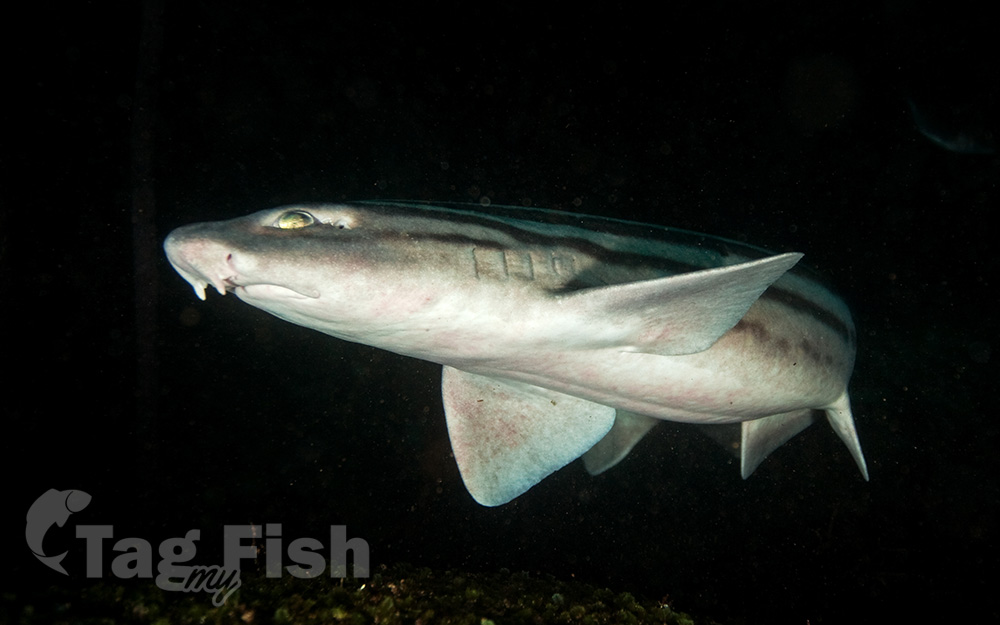Striped catshark
(Poroderma africanum)

Classification
General data
The pyjama shark or striped catshark (Poroderma africanum) is a species of catshark, and part of the family Scyliorhinidae, endemic to the coastal waters of South Africa. This abundant, bottom-dwelling species can be found from the intertidal zone to a depth of around 100 m (330 ft), particularly over rocky reefs and kelp beds.
With a series of thick, parallel, dark stripes running along its stout body, the pyjama shark has an unmistakable appearance. It is additionally characterized by a short head and snout with a pair of slender barbels that do not reach the mouth, and two dorsal fins that are placed far back on the body. It can grow up to a length of 1.1 m (3.6 ft) long.
The pyjama shark is primarily nocturnal, spending most of the day lying motionless and hidden in a cave or crevice or among vegetation. It often forms groups, particularly during summer. This species is an opportunistic predator that feeds on a wide variety of fishes and invertebrates; it favors cephalopods and frequents the spawning grounds of the chokka squid (Loligo reynaudi). When threatened, it curls into a circle with its tail covering its head.
Reproduction is oviparous, with females laying rectangular, dark brown egg cases two at a time year-round. This small and harmless shark adapts well to captivity and is commonly displayed in public aquariums. It is often caught as a bycatch of commercial and recreational fisheries. Many are killed by fishers who regard them as pests. Although there are no data suggesting its numbers have declined, the International Union for Conservation of Nature (IUCN) has assessed the pyjama shark as least concern.
It is most abundant off the Western Cape, and may venture as far as Saldanha Bay in the west and KwaZulu-Natal in the east; old records from Mauritius, Madagascar, and Zaire are almost certainly erroneous.
The pyjama shark is commonly encountered in very shallow intertidal and littoral waters no more than 5 m (16 ft) deep, though in and around Algoa Bay it occurs at depths of 50–100 m (160–330 ft) and has been reported to 108 m (354 ft). It favors rocky reefs and beds of Ecklonia kelp.











